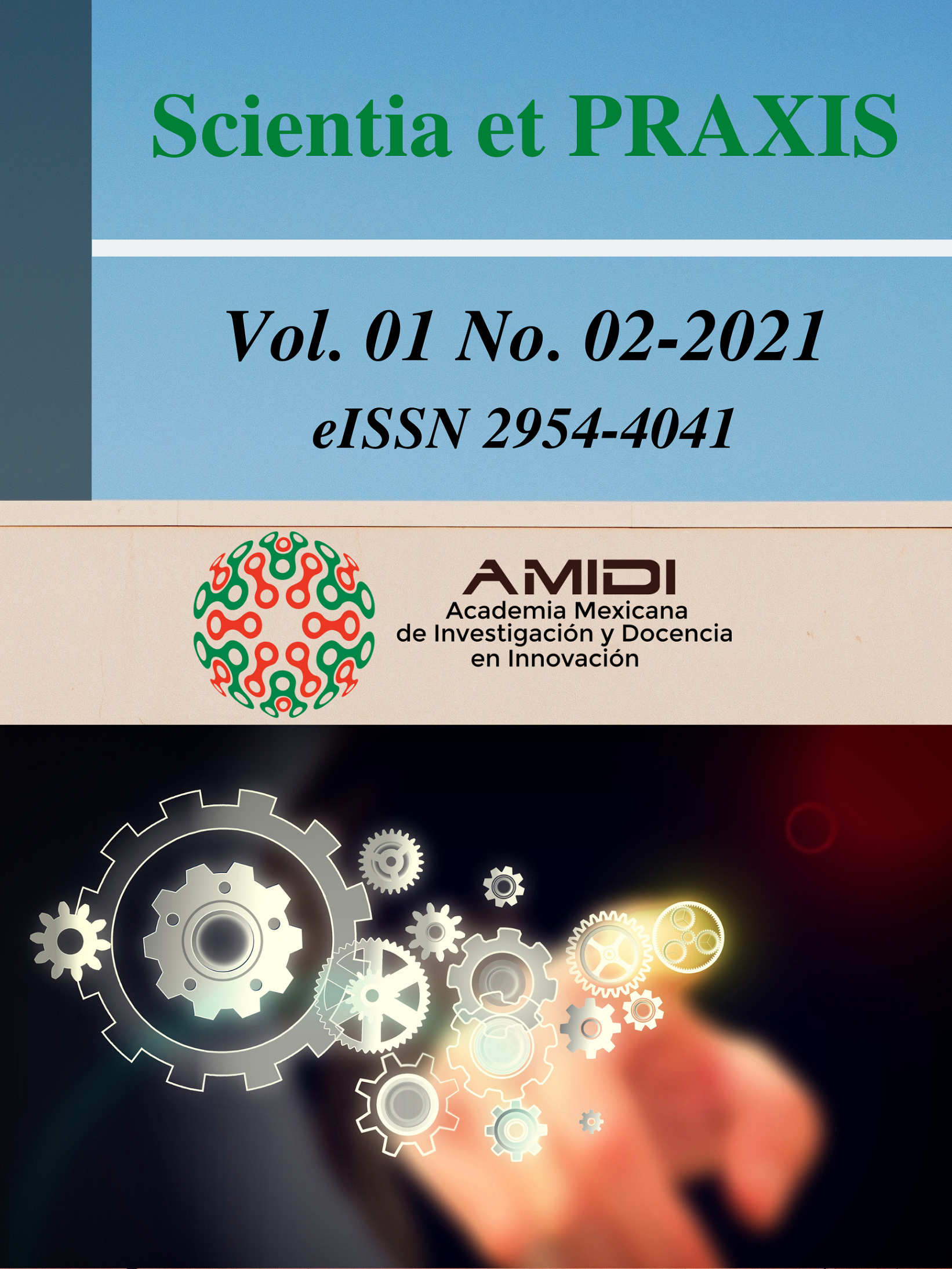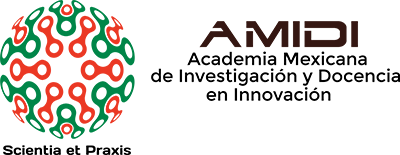Social Media Information Literacy vs. Fake News: Probing the Business Decisions under COVID-19 times as Innovation skills with fsQCA
DOI:
https://doi.org/10.55965/setp.1.02.a2Keywords:
digital marketing, e-Business, fake news, social media information literacy framework, innovation skills, fsQCAAbstract
Purpose. This research aims to probe a framework explaining how the social media user professionals in digital marketing and e-business can use social media information literacy (SMIL) for business decisions under COVID-19 times as innovation skills to combat fake news narratives (FKN) to the next normal.
Methodology. A literature review was done with Delphi-Focus Group and Analytic Hierarchy Process (AHP) under academics and professionals' supervision as SMIL experts. The survey was on 400 young Mexican SMEs' digital marketing and e-business from Jul-Sep 2021.
Findings and Originality. The original findings confirm a framework with five factors, nineteen variables, 71 items, and five paths as innovation skills.
Downloads
References
American Library Association. (2021a). Definition of Digital Literacy. https://literacy.ala.org/digital-literacy/
American Library Association . (2021b.). Definition of Information Literacy. https://literacy.ala.org/information-literacy/
Apuke, O.D. & Bahiyah, O. (2020). Fake news and COVID-19: modelling the predictors of fake news sharing among social media users.Telematics and Informatics 56, 1-16. https://doi.org/10.1016/j.tele.2020.101475 DOI: https://doi.org/10.1016/j.tele.2020.101475
Atkinson, C. (2019). Fake news can cause 'irreversible damage' to companies.Apr.25-2019.News.
Baig, A., Hall, B., Jenkins, P., Lamarre, E. & McCarthy B. (2020, May). The COVID-19 Recovery will be digital: A plan for the first 90 days. McKinsey & Co. https://www.mckinsey.com/~/media/McKinsey/Business%20Functions/McKinsey%20Digital/Our%20Insights/The%20COVID%2019%20recovery%20will%20be%20digital%20A%20plan%20for%20the%20first%2090%20days/The-COVID-19-recovery-will-be-digital-A-plan-for-the-first-90-days-vF.pdf?shouldIndex=false
Bandura, A. (1997). Self-Efficacy: The Exercise of Control, W.H. Freeman.
Berthon, P.R. & Pitt, L.F. (2018). Brands, truthiness and post-fact: managing brands in a post-rational world. Journal of Macromarketing, 28 (2), 218-227. https://doi.org/10.1177/0276146718755869 DOI: https://doi.org/10.1177/0276146718755869
Bühler, J., Murawski, M., Darvish, M. & Bick, M. (2020). Developing a Model to Measure Fake News Detection Literacy of Social Media Users. In Shu, K., Wang, S., Lee, D., & Liu, H. (Eds.). (2020). Disinformation, Misinformation, and Fake News in Social Media Emerging Research Challenges and Opportunities (pp. 256-273).Springer https://www.springer.com/gp/book/9783030426989 DOI: https://doi.org/10.1007/978-3-030-42699-6_11
Burkhardt, M.J. (2017). Combating fake news in the digital age. Library Technology Reports, 53(8), 1-36. https://www.amazon.com/-/es/Joanna-M-Burkhardt/dp/0838959911
CML (2021). Definition of Media Literacy. Center for Media Literacy. https://literacy.ala.org/897-2/
Chen,Z,F. & Cheng, Y. (2018). Consumer response to fake news about brands on social media: the effects of self-efficacy, media trust, and persuasion knowledge on brand trust. Journal of Product & Brand Management, 1-12. https://doi.org/10.1108/JPBM-12-2018-2145 DOI: https://doi.org/10.1108/JPBM-12-2018-2145
Deiser, R. & Newton, S.(2013). Six social-media skills every leader needs. Feb.2013. McKinsey & Co.
EBT(2021). Edelman Trust Barometer 2021https://www.edelman.com/trust/2021-trust-barometer
Fiss, P. C., (2011). Building better causal theories: A fuzzy set approach to typologies in (2018). Why Fake News is bad for business.Jan.25-2018.CBR. https://review.chicagobooth.edu/economics/2018/article/why-fake-news-bad-business
Johnson, R.; Edmundson-Bird, D. & Keegan, J.B. (2013). Making digital literacy a success in taught marketing courses. The Higher Education Academy,4(2). 1-15. https://doi.org/10.11120/elss.2013.04020002 DOI: https://doi.org/10.11120/elss.2012.04020002
Karlova, N.A. & Fisher, K.E. (2012). Plz RT: A Social Diffusion Model of Misinformation and Disinformation for Understanding Human Information Behaviour. Proceedings of the ISIC2012 (Tokyo), 1-17.
https://www.hastac.org/sites/default/files/documents/karlova_12_isic_misdismodel.pdf
La Berge, L., O´Tool, C., Smaje, K. (2020, October). How COVID-19 has pushed companies over the technology tipping point—and transformed business forever. McKinsey & Co. https://www.mckinsey.com/~/media/McKinsey/Business%20Functions/Strategy%20and%20Corporate%20Finance/Our%20Insights/How%20COVID%2019%20has%20pushed%20companies%20over%20the%20technology%20tipping%20point%20and%20transformed%20business%20forever/How-COVID-19-has-pushed-companies-over-the%20technology%20tipping-point-final.pdf?shouldIndex=false
LCM (2019). Dos de cinco organizaciones latinoamericanas han sido afectadas por los fake news. 2-Oct-2019. Latin American Communication Monitor https://latincommunicationmonitor.com/dos-de-cinco-organizaciones-latinoamericanas-han-sido-afectadas-por-los-fake-news/
https://science.sciencemag.org/content/359/6380/1094
Lee, A.Y.L. (2010). Media Education: Definitions, Approaches and Development around the Globe. New Horizons in Education, 58 (3), 1-13. https://eric.ed.gov/?id=EJ966655
Lee, A.Y.L. & So, C.Y.K. (2013). Media Literacy and Information Literacy: Similarities and Differences. Comunicar, Media Research Journal. 42 (XXI), 137-146. https://www.scipedia.com/public/Lee_So_2014a DOI: https://doi.org/10.3916/C42-2014-13
Lee, K., Ham, J. Yang, SB., Koo, Ch. (2018). Can You Identify Fake or Authentic Reviews? An fsQCA Approach. In Stangl, B. Pesonen, J. (Eds.) : Information and Communication Technologies in Tourism 2018 (pp.214-227). Springer. https://doi.org/10.1007/978-3-319-72923-7_17 DOI: https://doi.org/10.1007/978-3-319-72923-7_17
Lee, N.M. (2018). Fake news, phishing, and fraud: a call for research on digital media literacy education beyond the classroom. Communication Education, 67 (4), 460-466. DOI: https://doi.org/10.1080/03634523.2018.1503313
LFJ (2017). Learning the landscape of Digital literacy. Learning for Justice. https://www.learningforjustice.org/sites/default/files/2017-11/Learning-the-Landscape-of-Digital-LIteracy-Nov2017.pdf
Loeb, H.(2019).Business must combat fake news. Feb.20-2019 https://www.edelman.com/insights/business-must-combat-fake-news
Oluwakemi, O.T (2019). Digital Literacy and Entrepreneurial Returns Among Small Business Owners in Lagos State, Nigeria. Education & Science Journal of Policy Review and Curriculum Development 9 (2), 1-11. http://www.internationalpolicybrief.org/images/2019/JUNE/ESJPRCD/ARTICLE1.pdf
McDougall, J. (2019). Media Literacy versus Fake News: Critical Thinking, Resilience and Civic Engagement. Medijske studije, 10 (19), 29-45 https://hrcak.srce.hr/index.php?show=clanak&id_clanak_jezik=330018 DOI: https://doi.org/10.20901/ms.10.19.2
Mejía-Trejo. J. (2020). Análisis Cualitativo Comparativo. De Nítido (csQCA) a Difuso (fsQCA) Teoría y Práctica en la Administración de la Innovación. https://buk.com.mx
Mischke,J., Woetzel, J., Smit,S., Manyika,J., Ramaswamy,S., Birshan, M. Windhagen, E., Schubert, J., Hieronimus, S., Dagorret, G., Canal M.C. (2021, March). Will productivity and growth return after the COVID‑19 crisis? Executive Summary. McKinsey & Co. https://www.mckinsey.com/~/media/McKinsey/Industries/Public%20and%20Social%20Sector/Our%20Insights/Will%20productivity%20and%20growth%20return%20after%20the%20COVID%2019%20crisis/Will-productivity-and-growth-return-after-the-COVID-19-crisis-Executive%20summary-final.pdf?shouldIndex=false
Muñoz-Sanz, A. (2021, Marzo 19). Dr. Muñoz Sanz: Coronavirus, el agitador de las redes sociales. Biotech
https://biotechmagazineandnews.com/covid-19-las-fake-news-tratan-de-acorralar-a-la-ciencia/
NAMLE (2020). Media Literacy Defined. National Association for Media Literacy Education. https://medialiteracyweek.us/resources/media-literacy-basics/
NLT (2018). Commission on Fake News and the Teaching of Critical Literacy Skills. National Literacy Trust.
NACM (2018). Tracking Trends in Fake News, Issues Management, Leadership, Work Stress, Social Media Skills and Job Satisfaction. Results of a Survey of 1020 Communication Professionals in the usa and Canada. North American Communication Monitor. http://plankcenter.ua.edu/wp-content/uploads/2018/10/NACM-2018-Tracking-Trends.pdf
OFCOM (2010). What is Media Literacy. https://www.ofcom.org.uk/search?query=media%20literacy
OECD (2018). Guidelines for Collecting, Reporting and Using Data on Innovation, 4th Ed. Organisation for Economic Cooperation and Development, Paris: https://www.oecd-ilibrary.org/science-and-technology/oslo-manual-2018_9789264304604-en
Ordanini, A., Parasuraman, A. & Rubera, G. (2013), When the recipe is more important than the ingredients a qualitative comparative analysis (QCA) of service innovation configurations, Journal of Service Research,17 (2), 134-149. https://doi.org/10.1177/1094670513513337 DOI: https://doi.org/10.1177/1094670513513337
Ragin, C. C. (2006). Set relations in social research: Evaluating their consistency and coverage. Political Analysis, 14(3), 291–310. https://doi.org/10.1093/pan/mpj019 DOI: https://doi.org/10.1093/pan/mpj019
Ragin, C. C. (2008). Redesigning social inquiry: Fuzzy sets and beyond. Chicago: Chicago. DOI: https://doi.org/10.7208/chicago/9780226702797.001.0001
Rampersad, G., Althiyabi, T., Warner-Søderholm, G., Bertsch, A., Sawe, E., Lee, D.D., Wolfe, T., Meyer, J., Engel, J., Fatilua, U.N., Rusmania, N., Jiang, Y., Bolnick, D.I., Kirkpatrick, M., Gyaisey, A.P., Afful-dadzie, A., Boateng, R., Boyd-Barrett, O., Perugini, M., Hage, R.M. (2019). Birds of a Feather: Homophily in Social Networks. Computers in Human Behavior, 9 (1), 1–9. https://doi.org/10.1126/science.aao2998. DOI: https://doi.org/10.1126/science.aao2998
Ranatunga, R.V.S.P.K., Priyanath, H.M.S.M.,Megama,R.G.N. (2020). Digital Literacy, Business Uncertainty & Economic Performance: An Empirical Study of Small Businesses in Sri
Lanka. International Journal of Academic Research in Business & Social Sciences, 10 (5), 50-76 http://doi.org/10.6007/IJARBSS/v10-i5/7171 DOI: https://doi.org/10.6007/IJARBSS/v10-i5/7171
Rihoux, B., & Ragin, C. C. (2009). Configurational comparative methods: Qualitative comparative analysis (QCA) and related techniques. Sage Publications DOI: https://doi.org/10.4135/9781452226569
Saaty T. L. (2008). Decision making with the analytic hierarchy process. International Journal of Services Sciences, 1 (1), 83-98. https://doi.org/10.1504/IJSSCI.2008.017590 DOI: https://doi.org/10.1504/IJSSCI.2008.017590
Schilder, E. & Redmond, T., (2019). Measuring Media Literacy Inquiry in Higher Education: Innovation in Assessment. Journal of Media Literacy Education, 11(2), 95 – 121. https://digitalcommons.uri.edu/cgi/viewcontent.cgi?article=1400&context=jmle DOI: https://doi.org/10.23860/JMLE-2019-11-2-6
Schneider, C. Q.,Wagemann, C. (2010). Standards of good practice in qualitative comparative analysis (QCA) and fuzzy-sets. Comparative Sociology, 9 (3), 397–418. DOI: https://doi.org/10.1163/156913210X12493538729793
SPS (2020). Why digital literacy matters for marketers. SproutSocial. https://sproutsocial.com/insights/digital-literacy/
UNESCO.(2018). Journalism, Fake News & Disinformation: Handbook for Journalism Education and Training. United Nations Educational, Scientific and Cultural Organization. https://en.unesco.org/fightfakenews
UNESCO (2020). Media and Information Literacy. United Nations Educational, Scientific and Cultural Organization. https://en.unesco.org/themes/media-and-information-literacy
Woodside, A. G. (2017). The complexity turn: Cultural, management, and marketing applications. Springer. https://www.springer.com/gp/book/9783319470269 DOI: https://doi.org/10.1007/978-3-319-47028-3
Wymbs, C. (2011) Digital marketing: the time for a new ‘academic major’ has arrived. Journal of Marketing Education. 33(1), 93–106. https://doi.org/10.1177/0273475310392544 DOI: https://doi.org/10.1177/0273475310392544
Xing-Zheng, X& Niann-Chung, T. (2021). The effects of negative information-related incidents on social media discontinuance intention: Evidence from SEM and fsQCA. Telematics and Informatics 56. https://doi.org/10.1016/j.tele.2020.101503 DOI: https://doi.org/10.1016/j.tele.2020.101503
Zhou, W., Wang, A., Xia, F., Xiao, Y. & Tang, S. (2020a). Effects of media reporting on mitigating spread of COVID-19 in the early phase of the outbreak. Mathematical Biosciences and Engineering, 17 (3), 2693–2707. https://doi.org/10.3934/mbe.2020147 DOI: https://doi.org/10.3934/mbe.2020147
Zhou, X., Jain, A., Phoha, V.V. & Zafarani, R. (2020b). Fake News Early Detection: An Interdisciplinary Study. Cornell University, 1-25. https://arxiv.org/abs/1904.11679 DOI: https://doi.org/10.1145/3377478
Downloads
Published
How to Cite
Issue
Section
License

This work is licensed under a Creative Commons Attribution-NonCommercial 4.0 International License.











